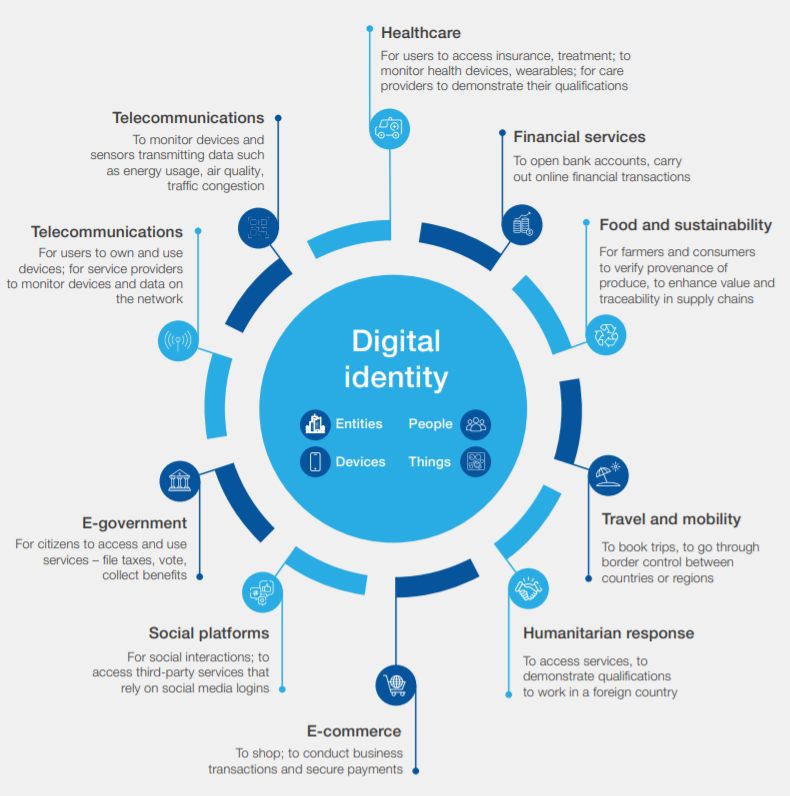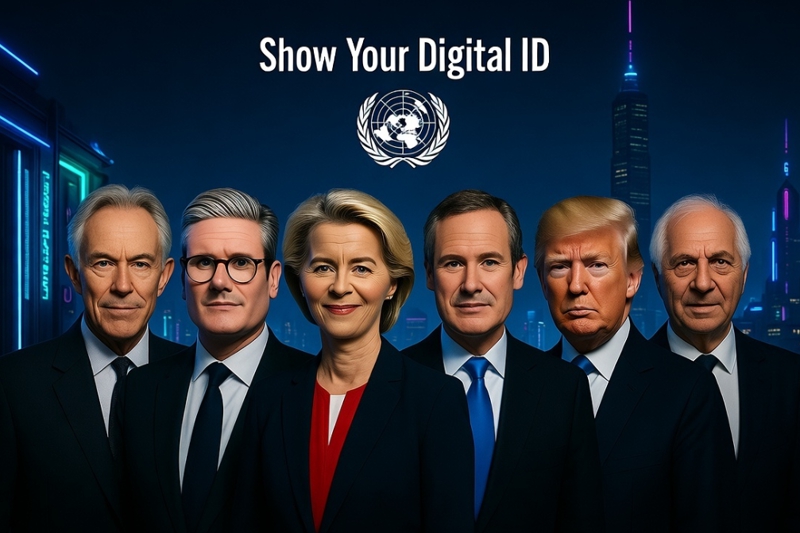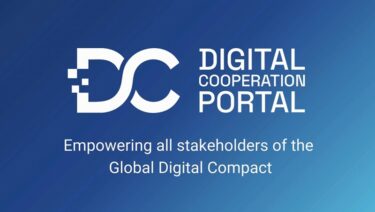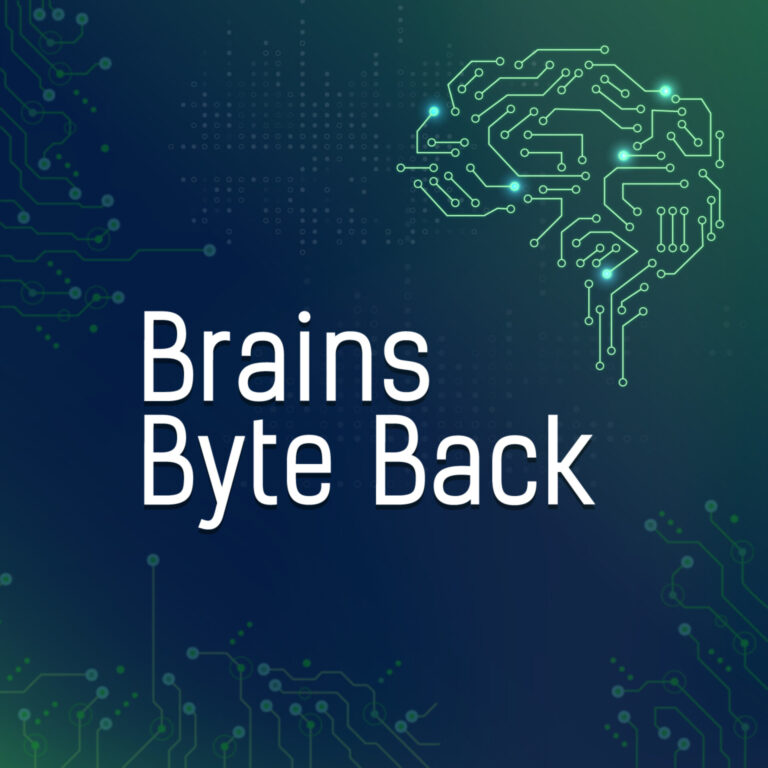Some countries are rapidly advancing digital ID while others may be slow-walking towards DPI, just waiting for a regime change, perceived crisis, or policy update to bring it all online: perspective
With the adoption of the “Pact for the Future” at the UN Summit of the Future in September 2024, 193 member states committed, in a non-binding way, to rolling out digital ID schemes as part of a wider plan for Digital Public Infrastructure (DPI).
DPI is a civic technology stack consisting of three main components:
- Digital identity
- Fast payment systems (e.g. programmable Central Bank Digital Currency [CBDC] systems, stablecoins, online banking apps, etc.)
- Massive data exchanges between public and private entities
One year after adopting the “Pact for the Future,” several nations are moving quickly towards the DPI implementation phase, with the UK being among the latest in the western world to announce mandatory digital ID for all adult workers.
While the “Pact for the Future” reached consensus among member nations, it is a non-binding resolution, and countries don’t have to give up their sovereignty, but many are going along with the plan anyway.
And for those countries who may be reluctant to announce digital ID schemes now, all it takes is a change of administration, a policy update, or a perceived emergency to get the ball rolling again.
“We commit by 2030 to develop and decide on a set of safeguards for inclusive, responsible, safe, secure and user-centered digital public infrastructure that can be implemented in different contexts (SDG 16)”
United Nations, Pact for the Future, September 2024
Within the “Pact for the Future” exists the “Global Digital Compact,” an annex that dedicates an entire section to advancing DPI globally.
Nowhere in the entire document do the words “digital ID” or “digital identity” ever appear, but they are fundamental to the entire concept of Digital Public Infrastructure.
Nevertheless UN member states agreed to assist in digital ID rollouts by 2030 by committing to:
- Develop and decide on a set of safeguards for inclusive, responsible, safe, secure and user-centered digital public infrastructure that can be implemented in different contexts (SDG 16)
- Exchange and make publicly available best practices and use cases of digital public infrastructure to inform Governments, the private sector and other stakeholders, building on existing United Nations and other repositories (SDGs 16 and 17)
- Increase investment and funding towards the development of digital public goods and digital public infrastructure, especially in developing countries (SDG 17)
- Encourage the formation of partnerships that bring together Governments, the private sector, civil society, technical and academic communities and international and regional organizations to design, launch and support initiatives that leverage digital public goods and digital public infrastructure to advance solutions for the Sustainable Development Goals (SDG 17)
Everything ties back to the Sustainable Development Goals (SDGs), aka Agenda 2030.

While not specifically mentioned by name in the document, the agenda to rollout global digital identity schemes was explicitly repeated by speakers at the Summit of the Future.
There, United Nations Development Program (UNDP) Administrator Achim Steiner explained that the UNDP was playing a key role in expanding Digital Public Infrastructure to everyone, everywhere.
“Consider Digital Public Infrastructure. Every person now has a secure digital identity — you’re imagining the year 2030. This has unlocked services that were previously out of reach of so many”
UNDP Admin Achim Steiner, UN Summit of the Future Action Day 2, September 2024
According to Steiner, digital identity unlocks services that were previously out of reach
Imagining a DPI future in 2030, Steiner fantasized, “When the digital ID initiative reached a young mother, it didn’t just give her access to education and healthcare, for the first time, ‘I feel seen,’ she said.”
And that’s the whole point of digital identity schemes — to make life nearly impossible to live without them.
And with so many services, credentials, and documents all being centralized and connected on an interoperable system, digital identity becomes a tool for complete control over an individual by incentivizing, coercing, or otherwise manipulating human behavior.
This is our “digital destiny.”
“This is a moment to redefine our digital destiny […] Part of the UN’s promise […] includes driving progress on Digital Public Infrastructure […] The means to an end”
UNDP Admin Achim Steiner, UN Summit of the Future Action Day 2, September 2024
“People-centered smart cities need accessible, secure, and fair digital public infrastructure that powers digital services, and ensures everyone has equal opportunity to fully participate in civic life”
United Nations, Building & Securing Digital Public Infrastructure Playbook, June 2022
To make no mistake that digital ID is the linchpin to DPI, the United Nations playbook on Digital Public Infrastructure says that digital ID is foundational to DPI, stating, “Broadly, there are three major types of protocols that facilitate digital public infrastructure: digital identity, digital payments, and data exchange.
“These three protocols are typically required for most digital service transactions such as permitting, issuing licenses, or providing records that often require validating a user’s identity, enabling exchange of data across agencies and users, and finally authorizing payments online.”
“By prioritizing these three protocols,” the UN says that “local governments can set the stage for the successful development of an entire ecosystem of digital services in alignment with their community’s unique needs.”
The United Nations is hardly alone in pushing digital identity onto all of humanity.
In October 2023, the UN, the Bill and Melinda Gates Foundation, and partners of the Rockefeller Foundation announced they were launching their “50-in-5” campaign to accelerate at least one DPI component (digital ID, digital payments, and data sharing) in 50 countries by 2028.
The 50-in-5 campaign is a collaboration between the Bill and Melinda Gates Foundation, the United Nations Development Program, the Digital Public Goods Alliance, and Co-Develop.
Co-Develop was founded by The Rockefeller Foundation, the Bill & Melinda Gates Foundation, Nilekani Philanthropies, and the Omidyar Network.
The Digital Public Goods Alliance lists both the Gates and Rockefeller foundations in its roadmap showcasing “activities that advance digital public goods,” along with other organizations and several governments.
Groups like these are the ones to fund, educate, and nudge sluggish or reluctant nations towards Agenda 2030 goals.
“By 2028, more than 500 million more people will have a digital identity that allows them to access employment and education opportunities more easily, as well as financial services, healthcare, and government programs”
Melinda French Gates, 50-in-5 Launch, November 2023
The United Nations, the Bill and Melinda Gates Foundation, the Rockefeller Foundation, the World Bank, the Tony Blair Institute for Global Change, the G20, the World Economic Forum (WEF), and so many more globalist organizations have all partnered with each other in some shape or form to make sure no one escapes the digital ID agenda.
According to the World Economic Forum, digital identity not only “determines what products, services and information we can access,” but also, “what is closed off to us.”
This is the reality of digital identity.
Digital ID is not about curbing illegal immigration; it has nothing to do with securing jobs, and it most certainly isn’t meant to protect youth online.

Digital ID schemes are all about surveillance and control through coercion and force.
The UK made it abundantly clear that incentivization was completely off the table when it announced it would force digital ID on all adult workers.
And the UK Online Safety Act is already pushing digital ID with internet passports like online age verifications.
The same has happened in Australia, and the same is happening in the European Union.
Do you think the United States is free from this agenda? It’s not.
“We joined fellow member states in shaping and committing to a broad range of priorities in the Pact for the Future; forging the Digital Global Compact; signing on to the Declaration on Future Generations; enabling the United Nations and international institutions to better respond to shocks like pandemics and natural disasters”
US Secretary of State Antony Blinken, Summit of the Future Remarks, September 2024
Apart from committing to the Pact for the Future, the US is looking to slip digital ID into various initiatives, including for immigration and healthcare.
US President Donald Trump is all in favor of biometric, entry-exit visa tracking systems under the banner of securing the border, but this is also a way to slip digital ID in through the backdoor for all travelling Americans, not just foreigners.
Healthcare is another area where digital ID may be implemented in the US.
As part of the White House’s efforts to modernize the health tech ecosystem the US Department of Health and Humans Services (HHS) is exploring how to encourage, require, and in some cases mandate digital ID for patients, providers, and payers.
In July, 2025 the White House held a “Make Health Tech Great Again” event to give an update on where the digitization and public-private partnerships were heading.
“Patients will simply be able to grant their doctors access to their records at the push of a button […] This system will be entirely opt-in, and there will be no centralized government-run database”
President Donald Trump, Make Health Tech Great Again, July 2025
“Regarding digital identity implementation: What impact would mandatory use of the OpenID Connect identity protocol have?
US Department of Health and Human Services, Request for Information; Health Technology Ecosystem, May 2025
President Donald Trump spoke about an effort to “Kill the Clipboard” in which patients can give their healthcare providers a QR code for instant access to their records.
The president assured that this type of digital identity system would be “entirely opt-in.”
However, an HHS request for information (RFI) on the “Health Technology Ecosystem” shows how the administration has been looking to encourage, require, and in some cases even mandate, the adoption of digital identity schemes.
“What would providers need help with to accelerate the transition to a single set of trusted digital identity credentials for the patient to keep track of, instead of one for each provider?”
US Department of Health and Human Services, Request for Information; Health Technology Ecosystem, May 2025
Still doubtful that digital ID could come to the US?
Consider that former UK Prime Minister Tony Blair has been pushing digital ID for decades.
Now, consider that Oracle co-founder Larry Ellison is one of Blair’s best friends and they both have a shared vision to create digital ID-linked national data libraries to house information on every country’s population.
Oracle offers a plethora of digital identity solutions under its Identity and Access Management product line, and the company is actively engaged in trying to demystify digital ID.
A recent article co-published by The New Statesman and Democracy for Sale in Lighthouse Report states that “Ellison invested $130 million in the TBI [Tony Blair Institute] between 2021 and 2023, with a further $218 million pledged since then.”
On Saturday, investigative journalist Michael Shellenberger posted on X, “The man behind the digital ID push is Larry Ellison, owner of Oracle, CBS, CNN, and, soon, TikTok. He wants data centralization and total surveillance. ‘Citizens will be on their best behavior because we’re constantly watching & recording everything that’s going on.’ Terrifying.”
“If you want to improve population health, you have to take all of your healthcare data, your diagnostic data, your electronic health records, your genomic data […] and move it into a single, unified data platform”
Larry Ellison, World Governments Summit, February 2025
During a one-on-one chat with Blair called “Reimagining Technology for Government” at the World Governments Summit 2025 in February, Ellison proposed that in order for governments to provide better services to the people, there should be a single, unified platform and database to store all the information about a country.
Ellison spoke at length about health data, but he also said that information in the database should include social services data as well, all accessible in one, single place.
“All this [fragmented] information we have about our country […] We need to take that and unify that into a single database, so when we ask questions, the data model has all the information it needs to answer the question, discover the insight, and recommend an action”
Larry Ellison, World Governments Summit, February 2025
Two weeks after Blair spoke with Ellison at the World Governments Summit in Dubai, UAE, Blair’s institute published a lengthy blueprint for the creation and execution of a digital ID-linked National Data Library.
According to the report, “Governing in the Age of AI: Building Britain’s National Data Library:”
“The National Data Library (NDL) has the potential to become a vital piece of enabling infrastructure for public-service delivery and economic growth in the United Kingdom.
“It is intended to unlock the full potential of public-sector data by enabling secure, seamless, quick and scalable access to linked data sets.”
The idea is to create a unified, interoperable library that links data on basically everyone and everything that exists in the UK.
Ellison wants the same for the US.
And let’s not forget every that every big tech CEO and technocrat has been cozying-up to Trump since he took office — Peter Thiel and his protegee JD Vance, Elon Musk, Sam Altman, Sundar Pichai, Satya Nadella, Tim Cook, Mark Zuckerberg, and more — all are looking to get in on the action, if not directly for digital ID, then for the AI-powered services that will eventually be linked to digital ID and DPI.
“None of this would be possible without efforts to improve the broader data infrastructure, including efforts around interoperability and digital identity”
Tony Blair Institute for Global Change, Governing in the Age of AI: Building Britain’s National Data Library, February 2025
Globalist think tanks, big tech, NGOs, governments, credit card companies, and big banks all back interoperable digital public infrastructure.
As India’s digital ID architect Nandan Nilekani told the International Monetary Fund (IMF) in April 2023, “What are the tools of the New World? Everybody should have a digital ID; everybody should have a bank account; everybody should have a smartphone.”
Everything else is built on that indeed.
Your social credit score, your carbon allowance, your travel permits, your health status, what you are allowed to buy or sell, where you are allowed to transact, what you are able to say on social media — everything is built on digital ID.
Once every citizen on the planet is pegged to a digital identity, they can become completely controllable.
Unless you’re from Russia, Iran, Nicaragua, North Korea, Belarus, Syria, or Sudan, then your government has already committed, in non-binding way, to rolling out digital ID, fast payment systems, and massive data exchanges by the year 2030.
Some countries and regions are rapidly advancing DPI while others may be slow-walking towards digital slavery, just waiting for the right regime change, perceived crisis, or policy update to bring it all online.
Vaccine passports and lockdowns were a trial-run. They put the technological foundation in place and they were the litmus test for compliance.
Now, digital ID is being forced on entire populations.
Next, DPI will used to monitor, manipulate, and monetize everything in nature in the name of preserving biodiversity.
Digital ID is the key to everything. Total control over people and planet.
This is Agenda 2030. This is the Great Reset.
The Sociable has been documenting digital ID, Agenda 2030, the great reset, and DPI for almost five years while explaining what has been coming for us all.
Feel free to make full use of the menu and search bars on our website to view our archives.
Image Source: AI generated with Grok










